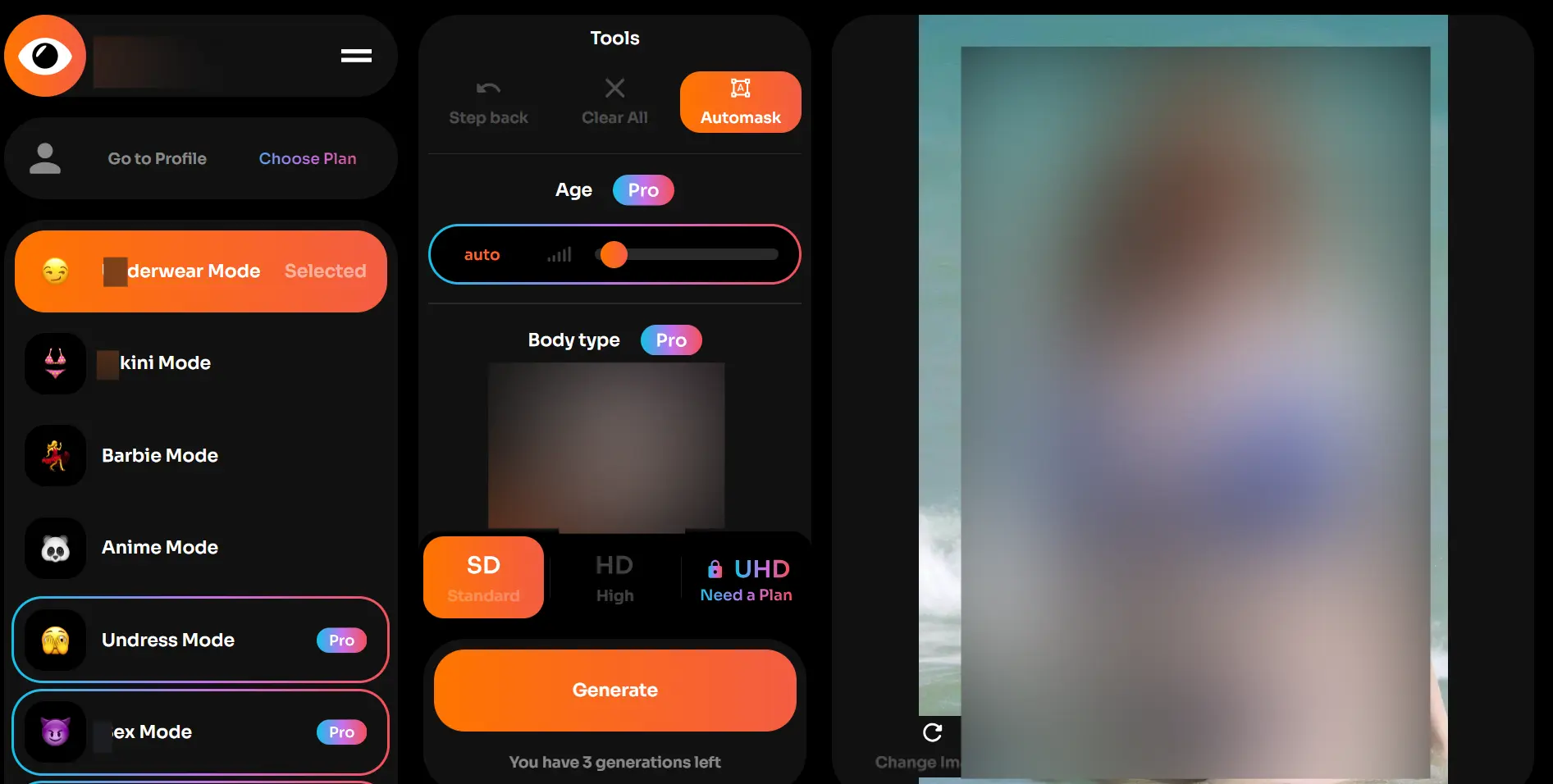In an age where digital artistry reigns supreme, have you ever considered the transformative potential held within the realm of artificial intelligence and its capacity to reshape visual narratives? The ability to manipulate images, to reimagine them with a fluidity and precision previously relegated to the realm of fantasy, is now at our fingertips, offering unprecedented creative avenues.
The digital landscape is constantly evolving, and with it, the tools available to artists, designers, and even the curious hobbyist. One of the most intriguing developments is the advent of AI-powered clothing removal technology. This technology, utilizing advanced machine learning algorithms, offers the potential to modify images in ways previously unimaginable. The implications are vast, spanning from artistic exploration to professional applications in fields like fashion design and visual storytelling.
| Feature | Details |
|---|---|
| Functionality | AI-driven image alteration; specifically, the removal of clothing or items from images. |
| Technical Foundation | Powered by advanced machine learning algorithms, trained on large datasets to ensure realistic and precise results. |
| Core Benefit | Enables creative expression and exploration of visual possibilities, offering users the chance to experiment with different styles and looks. |
| Target User | Creatives (artists, designers, hobbyists), professionals in fashion, and anyone interested in photo manipulation. |
| Key Feature 1 | Provides a "free trial" or introductory phase to enable new users to get acquainted with the platform. |
| Key Feature 2 | Offers premium plans with expanded functionalities and accelerated service for those who need greater capabilities. |
| Use Cases | Artistic projects, fashion design visualization, personal style exploration, image enhancement and modification. |
| Data Privacy | Emphasizes privacy, guaranteeing user data protection and confidentiality. |
| Ease of Use | Designed for simplicity, allowing users to remove clothing and items in pictures using simple actions. |
| Technology | Utilizes AI to remove clothing and items in images. |
| Output | Seamless and realistic image transformation. |
| Additional Notes | Requires the user to upload an image, select an area or cup type, and then the ai performs the task. |
| Available Tools | Openart AI, Undress AI, DeepNude Telegram bot, are among the options. |
| Limitations | Training primarily benefits female images and results are highly influenced by lighting conditions. |
| Reference Link | Example Reference (Please replace with an actual, relevant link) |
The primary allure of AI clothes removers lies in their versatility. They cater to a broad spectrum of applications. For artistic endeavors, these tools provide a canvas for creating unique and visually arresting imagery. Artists can explore concepts of form, style, and composition without the constraints of traditional photography or the limitations of physical prototypes. The ability to visualize different styles and aesthetics instantly opens up a new frontier for creative expression.
In the realm of fashion design, AI clothes removers offer unparalleled benefits. Designers can experiment with garment designs on various body types, draping, and fit considerations without needing physical models or the time-consuming process of producing prototypes. This accelerates the design process, allowing for quicker iteration and testing of design concepts. The ability to quickly visualize a design on different body types and in various settings is invaluable in making informed decisions about a garments aesthetic appeal and overall wearability.
The technology often promises ease of use, allowing users to upload an image, select an area, and let the AI work its magic. This accessibility democratizes the process of photo manipulation, enabling both seasoned professionals and casual users to tap into its capabilities. The promise of realistic results hinges on the AI's training, often on vast datasets designed to mimic the complexities of the human form and clothing interaction. It's worth mentioning that many of these AI models perform best on female subjects due to the nature of their training data.
The process often involves a user selecting the area of clothing they wish to remove and then the software will do the rest. This is a sophisticated technology that enables a seamless and realistic finish. But to achieve the desired results, sometimes human interaction is involved. The importance of the retouchers, the understanding of the anatomy of the human body, understanding of the lighting effects are key components of the image transformation.
Many platforms offer free trials, allowing users to test the capabilities without financial commitment. Premium plans offer extended functionality, faster processing times, and other advanced features. Several options exist for those seeking to experiment with this technology. "Try undressher ai free today!" is an example of the call to action.
One notable example is "clothoffbot," a deepnude telegram AI bot that utilizes AI to undress photos. It boasts speed, discretion, and ease of use. Openart AI also integrates this feature into its suite of generative tools. Some tools require a user to select the "cup type" of the clothing, indicating the level of detail the AI should focus on.
The importance of data privacy cannot be overstated. Platforms that handle image processing must implement robust security measures to protect user data and guarantee confidentiality. Users need reassurance that their images and personal information will be handled securely. It is essential that any platform or application that processes images is built on a foundation of transparency, security, and respect for user privacy.
The effectiveness of these tools also relies on the quality of the training data and the sophistication of the underlying algorithms. While many AI models strive for realism, understanding the nuances of anatomy, lighting, and perspective is crucial for creating believable and visually compelling results. The best results come from skilled retouchers. The best results can only be achieved with professional skills.
However, it is crucial to acknowledge the ethical considerations associated with AI-powered image manipulation. The potential for misuse exists, and it is imperative that these tools are used responsibly and ethically. Transparency, robust security measures, and adherence to ethical guidelines are crucial to ensure that the technology is used for creative and professional purposes and not for malicious activities.
In conclusion, AI clothes removers represent a powerful and versatile tool that unlocks new frontiers of creativity, offers significant benefits in professional fields, and also comes with complex ethical considerations. The platforms provide users with an unprecedented degree of control over image manipulation. As these technologies continue to evolve, users, designers, and developers alike must approach them with both enthusiasm and awareness, always prioritizing responsible use and ethical considerations.


